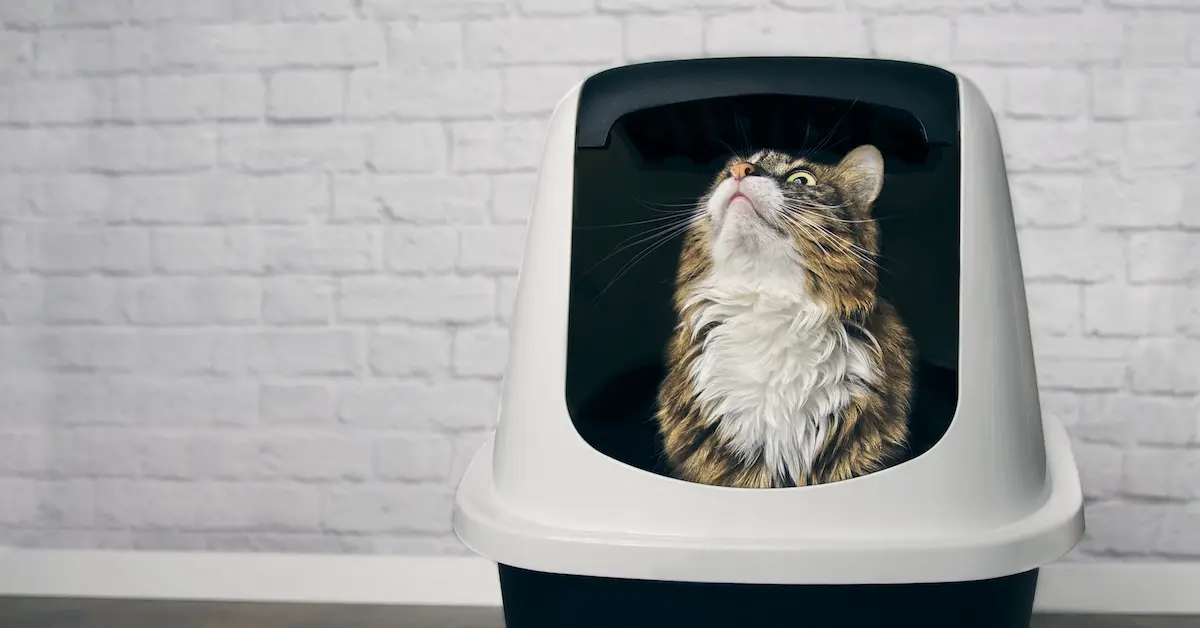Avoid stressful interactions and keep an open mind when adopting a dog. Research the breed or breeds that best suit your lifestyle and personality for a better chance of finding the perfect furry friend.
However, be aware of red flags that can lead to adoption issues such as downplaying behavioral issues, inadequate information about the organization or dog’s health, and feeling pressured or manipulated to adopt. It is important to assess your ability to provide a forever home for the dog and to ensure that basic information about the dog is provided before making any decisions.
By taking these precautions, you can increase your chances of a successful and happy adoption.
What To Avoid When Adopting A Dog
When adopting a dog, it is important to avoid stressful situations such as dog parks, big gatherings, and busy locations. Be patient and keep an open mind as dogs need time to adjust and settle in while you learn about their habits.
Do your research and consider size, temperament, and living situation to find the perfect four-legged friend. Be aware of red flags such as downplaying behavioral issues, missing information about the organization or dog’s health, and pressure or manipulation to adopt.
When adopting a dog, it is important to know what to avoid to ensure a smooth and successful adoption process. Stressful interactions, rushing the process, focusing on specific breeds, not dog-proofing your home, neglecting regular vet visits, and not maintaining a regular routine are some red flags to watch out for. By avoiding these mistakes, you can ensure that your new furry friend adapts well to their new home and becomes a loyal and loving companion. Let’s take a closer look at each of these red flags.
Stressful Interactions
It is crucial to minimize stressful interactions as much as possible during the adoption process. This includes avoiding dog parks, large gatherings, and busy locations that can agitate your new pup. Keep an open mind and approach your furry friend with patience. Give them time to adjust and settle in while understanding their habits better.
Rushing The Process
One of the biggest mistakes that people make when adopting a dog is rushing the process. Taking the time to find the right breed or mix, temperament, and the perfect living situation is crucial for success. Spending a few days or even weeks getting to know your four-legged friend before finalizing the adoption can help establish a deeper connection and ensure that you are the perfect match.
Focusing On Specific Breeds
Focusing on specific breeds is a red flag that many people fall into. While it is essential to choose a breed that suits your lifestyle, it is also essential to keep an open mind to other breeds and mixed breeds that could be a great fit too. Physical appearance alone is not everything in making a successful adoption.
Not Dog-proofing Your Home
Dog-proofing your home is a crucial step that many people overlook when adopting a dog. Take the time to identify potential hazards such as electrical cords, dangerous chemicals, and food items that could be harmful to your new furry friend. By dog-proofing your home, you will keep your furry friend safe and minimize the chances of accidents.
Neglecting Regular Vet Visits
Neglecting regular vet visits is a common mistake made by pet owners. Proper healthcare ensures that your furry friend is healthy and growing as they should. Regular check-ups and vaccination schedules should always be maintained.
Not Maintaining A Regular Routine
Not maintaining a regular routine in the early weeks can easily set you up for future difficulties. Dogs thrive on consistency and routine. Establishing a routine is just as essential for the humans as it is for dogs. Having a consistent feeding, playtime, and potty regimen will help your new furry friend to adjust and settle in comfortably.
To avoid these red flags when adopting a dog, remember to approach each situation with patience and an open mind, always do your research, and follow proper dog care guidelines. By doing so, you will ensure that your new furry friend becomes a loyal and happy member of your family.
Credit: www.businessinsider.com
The Ins And Outs Of Adopting A Rescue Dog
During the process of dog adoption, it is crucial to avoid stressful situations, such as large gatherings or busy locations. Keep an open mind and approach each situation with patience. Be aware of the red flags, including behavior issues, missing information, and insufficient details about the dog’s health.
It is essential to conduct thorough research and find the perfect fit for your family’s lifestyle and personality.
When looking to add a furry friend to your household, adopting a rescue dog can be a rewarding experience. It not only gives a loving dog a new home but can also bring joy and happiness to your life. However, before you bring home a rescue dog, it’s essential to understand the ins and outs of the adoption process.
From considering size to dog-proofing your home, there are several crucial factors to keep in mind. In this blog post, we’ll take a closer look at the red flags to avoid when adopting a dog, with a specific focus on the ins and outs of adopting a rescue dog.
Considering Size
One of the essential factors to consider when adopting a rescue dog is its size. While puppies are cute and cuddly, remember that they grow quickly and can quickly outgrow small spaces. Additionally, larger breeds require more exercise and space, making them less suited for apartment living. On the other hand, smaller breeds are easier to manage and are an ideal fit for apartment dwellers. Therefore, when looking to adopt, consider the size of the dog, your living space, and lifestyle.
Researching Temperament
Another crucial factor to consider when adopting a rescue dog is their temperament. While every dog’s personality is unique, some breeds have specific temperaments that may or may not work for your lifestyle. Therefore, it’s crucial to research the breed’s temperament you’re considering bringing home. This will help you understand what kind of behavior to expect, such as whether the dog is good with children, other pets, or has a higher maintenance level.
Finding A Good Fit
Finding the right dog to adopt requires finding one that is a good fit for you and your household. This means considering your lifestyle, activity level, and whether or not you have children or other pets. It is essential to ask the rescue center or shelter as many questions as possible about the dog and their previous environment. This will help you gauge whether the dog is suitable for your home and whether you can provide them with a loving and forever home.
Pet-proofing Your Home
Once you’ve found the right dog to adopt, the next step is to pet-proof your home. This means ensuring that your home is safe for your new furry friend. For example, some houseplants and household items are toxic to dogs, and it’s essential to remove them from their reach. Additionally, Keep potential choking hazards like small toys, ribbons, or strings, out of your dog’s reach.
Finally, while the adoption process is exciting, it’s vital to be aware of red flags. From downplaying behavioral issues to being pressured to adopt, take the time to understand the adoption process and avoid any potential pitfalls. Keeping these factors in mind will help ensure a smooth and successful adoption and a happy life for you and your new furry friend.
Red Flags To Watch Out For
When adopting a dog, it is crucial to watch out for red flags. These can include downplaying behavioral issues, missing information about the dog’s health or the organization/shelter, being pressured or manipulated to adopt, or insufficient basic information. It is important to take the time to research and consider which dog will be the best fit for your lifestyle and personality to ensure success in finding the perfect four-legged friend.
Adopting a dog is a life-changing decision and should not be taken lightly. While many organizations and shelters are transparent and honest, some may hide red flags that can harm you and your furry friend. Here are some warning signs to watch out for:
Downplaying Behavioral Issues
Some shelters might downplay or completely ignore a dog’s behavioral issues. It is important to ask about any aggression, separation anxiety, or fears that the dog may have to ensure that you are a good fit for each other.
Missing Information About the Organization/Shelter
If the organization or shelter you are dealing with seems unprofessional or unwilling to provide basic information, it may be a red flag. Ensure that the organization or shelter allows access to their facilities, or at least provides photos to make sure the dogs are living in a clean and healthy environment.
Feeling Pressured or Manipulated
Be cautious of organizations or shelters that pressure or manipulate you into adoption. Don’t be afraid to walk away if you feel uncomfortable or unsure about the process.
Insufficient Basic Information
If you feel that the shelter is not providing enough basic information about the dog, such as medical history, vaccinations, or behavioral patterns, it may be another warning sign. It is important to obtain as much information about the dog as possible to ensure your new pet’s safety and happiness.
Lack of Assessment for a Forever Home
Lastly, ensure that the organization or shelter assesses your suitability as a forever home for the dog you are adopting. It is crucial to ensure that you and the dog will bring out the best in each other and that the dog is going to a safe and loving home.
Be sure to keep these red flags in mind when adopting a dog. Doing so will help ensure success in finding the perfect four-legged companion and avoid any potential problems down the line.
Signs Of Shady Rescues
When adopting a dog, be on the lookout for red flags that may indicate a shady rescue. These could include downplaying behavioral issues, missing information about the organization or dog’s health, and feeling pressured or manipulated to adopt. To ensure a successful adoption, take the time to research and find the perfect fit for your lifestyle and personality.
Adopting a dog can be an incredibly fulfilling experience, but it is essential to make sure that you are working with a reputable rescue organization or shelter. Unfortunately, not all rescues are created equal, and it is crucial to be on the lookout for signs of shady rescues that may not have the animal’s best interests in mind. In this section, we will delve into the red flags identified by Reddit users concerning unprofessional or inappropriate behavior by rescues.
Red Flags Identified by Reddit Users
Reddit users have identified several red flags when it comes to rescues that should raise immediate concern. Some of these red flags include downplaying behavioral issues or missing information about the organization or dog’s health. Insufficient basic information, pressure to adopt, or being manipulated into adoption are also reasons to be wary of a rescue.
Unprofessional or Inappropriate Behavior
Some less reputable rescues may engage in unprofessional or inappropriate behavior that could be a red flag. For example, instead of providing appropriate care for dogs, these organizations may cut corners or focus solely on profit. As a result, they may neglect the dog’s needs, leading to significant health or behavioral problems that you will have to deal with later. They may also make promises they can’t fulfill or lack transparency surrounding adoption information.
It is essential to remember that adopting a dog is a serious commitment that should not be taken lightly. Working with a reputable and trustworthy rescue can make the process much easier and more fulfilling for both you and the animal. Always be vigilant, especially when it comes to the signs of shady rescues, and take the time to evaluate the organization before making a decision.
Animal Shelters: What To Look For
When adopting a dog from an animal shelter, it’s important to be aware of red flags. This can include downplaying behavioral issues, missing information about the organization or the dog’s health, being pressured or manipulated to adopt, and insufficient basic information.
Keep an open mind, approach each situation with patience, and research which breed or breeds of dog would be the best fit for your lifestyle and personality to find the perfect four-legged friend.
When adopting a dog, it’s important to choose a trustworthy and reputable animal shelter that will provide not just the dog’s physical needs, but also its emotional welfare. Good shelters have the necessary resources and trained staff to give dogs the best possible chance for a good life in their new homes. However, as potential adopters, it’s important to be aware of red flags when identifying a good shelter.
Good Shelter Practices
When searching for the right shelter, it’s essential to research and identify those that prioritize the well-being of the animals under their care. Look for a shelter that has well-maintained and clean spaces for the dogs to live in and have access to proper food and water. Also, ensure that the shelter has enough staff to cater to the animals, and, most importantly, a low employee-to-dog ratio to guarantee that every dog gets the attention and care it deserves.
Medical Treatment And Care
A good shelter should provide proper medical treatment and care for the dogs to promote their overall welfare. They should ensure that every dog is up-to-date with appropriate vaccinations, and they should have a good track record of spaying or neutering dogs before adoption. If any dog requires medical attention, the shelter should have a veterinarian that can deliver prompt treatment.
Reputable Trainers And Adoption Programs
Reputable shelters should have an adoption program that matches dogs with the right owners. They should assess the personality and behavior of each dog and inform you about the dog’s needs and habits. Some dogs might require extra attention and training, and an adequate shelter should recommend reputable trainers in the area to aid in the training process.
It’s essential to identify a reputable shelter that prioritizes the well-being of the dogs in their care. Always trust your instincts and do your research to ensure that you provide a loving home to the dog that’s the right fit for both you and your family.

Credit: www.experian.com
Preparing For A New Dog
When preparing for a new dog, it’s important to look out for red flags when adopting. Be aware of downplayed behavioral issues, missing information about the organization or shelter, being pressured to adopt, insufficient basic information, and not being assessed as a forever home.
Keep an open mind and approach each situation with patience to find the perfect four-legged friend.
Adopting a new dog can be an exciting and rewarding experience, but it’s important to make sure you are fully prepared for the responsibility that comes with owning a pet. Before bringing a new dog into your home, there are some important factors to consider, including budgeting for a dog, pet-proofing your home, choosing the right food, finding a vet, and establishing a routine. Let’s take a closer look at each of these factors.
Budgeting For A Dog
Bringing a dog into your home is not just a one-time expense. It is essential to keep in mind that owning a dog requires ongoing expenses such as food, supplies, grooming, veterinary care, and other essentials. Make sure you have a budget in place to meet these ongoing expenses throughout the dog’s life. It’s recommended to have an emergency fund in place as well to cover any unexpected expenses.
Pet-proofing Your Home
The safety of your new dog is of utmost importance. Take time to ensure your home is pet-proofed before bringing your dog home. Secure loose electrical cords, remove toxic plants, and fence off swimming pools. Keep any small or sharp objects out of reach and secure garbage bins, and store cleaning products out of reach.
Choosing The Right Food
Choosing the right food is vital to your dog’s health. Always opt for high-quality dog food that meets your dog’s nutritional needs. Make sure to read the label and steer clear of dog food with additives, fillers, or by-products. Additionally, ensure that the dog’s water bowl is always full, and you opt for clean water for your pet.
Finding A Vet
Researching and finding a veterinarian for your new pet is one of the most important things you can do for their health. Look for a veterinarian that has experience with the breed of dog you are adopting. Ensure that your vet is available for regular checkups and emergency care if necessary.
Establishing A Routine
Establishing a routine for your dog is an important factor in ensuring your pet’s happiness and health. Dogs thrive on routine and stability. Be consistent with feeding times, potty breaks, and exercise routines. Ensure that your dog has enough exercise and playtime to avoid stress, boredom, and other behavioral problems.
Preparing for a new dog requires time, effort, and financial commitment. Make sure to create a budget, pet-proof your home, choose high-quality food, find a veterinarian, and establish a routine to ensure the well-being of your new pet. By doing so, you’ll provide your new furry friend with love, safety, and a healthy start to their new life.
Frequently Asked Questions For Red Flags When Adopting A Dog
What To Avoid When Adopting A Dog?
To ensure a smooth adoption process for a dog, avoid stressful situations such as busy locations and dog parks. Approach each situation with patience and keep an open mind as animals need time to adjust to their new family. Also, take time to research and understand which breed of dog is best suited to your lifestyle.
Avoid rushing the integration process, not dog-proofing your home, and not having regular vet visits. Make sure to be aware of red flags such as downplaying behavioral issues and insufficient basic information.
How Do You Know If A Rescue Dog Is Right For You?
To know if a rescue dog is right for you, consider important factors such as size, temperament, and living situation. Research which breed or breeds of dog would be the best fit for your lifestyle and personality to set yourself up for success in finding the perfect four-legged friend.
Furthermore, avoid stressful interactions such as dog parks, large gatherings, and busy locations during the adaptation period to minimize any complications. Keep an open mind and approach each situation patiently, as animals often need time to adjust and learn more about your family’s habits.
What Is The 3-3-3 Rule For Adopted Dogs?
The 3-3-3 rule for adopted dogs means giving them three days to settle in, three weeks to adapt to the new environment, and three months to fully adjust. Avoid stressful interactions and keep an open mind since every animal needs time to adjust.
Research which breeds would be the best fit for your lifestyle and personality by considering size, temperament, and living situation.
What Not To Do When Getting A Dog?
When getting a dog, avoid rushing the integration process, focusing only on specific breeds or puppies, not dog proofing your home, not considering your working hours, and not having regular vet visits. Taking time to research and finding the best fit for your lifestyle and personality is important.
Avoid stressful interactions during this time and maintain a regular routine in the early weeks. Also, watch out for red flags such as downplaying behavioral issues, missing information about the dog’s health, and insufficient basic information.

Credit: www.experian.com
Conclusion
Adopter before adopting a dog, it is crucial to be aware of the red flags that may arise during the process. Taking the time to research and choose a suitable breed for your lifestyle, asking for all the necessary information about the dog’s health and background, and being patient during the adjustment period are essential steps towards finding the perfect furry companion.
It is also important to watch out for warning signs like behavioral issues, pressure from adoption agencies, and missing crucial information. By being aware of these red flags, you can ensure that your adoption process is smooth and successful.





One Response